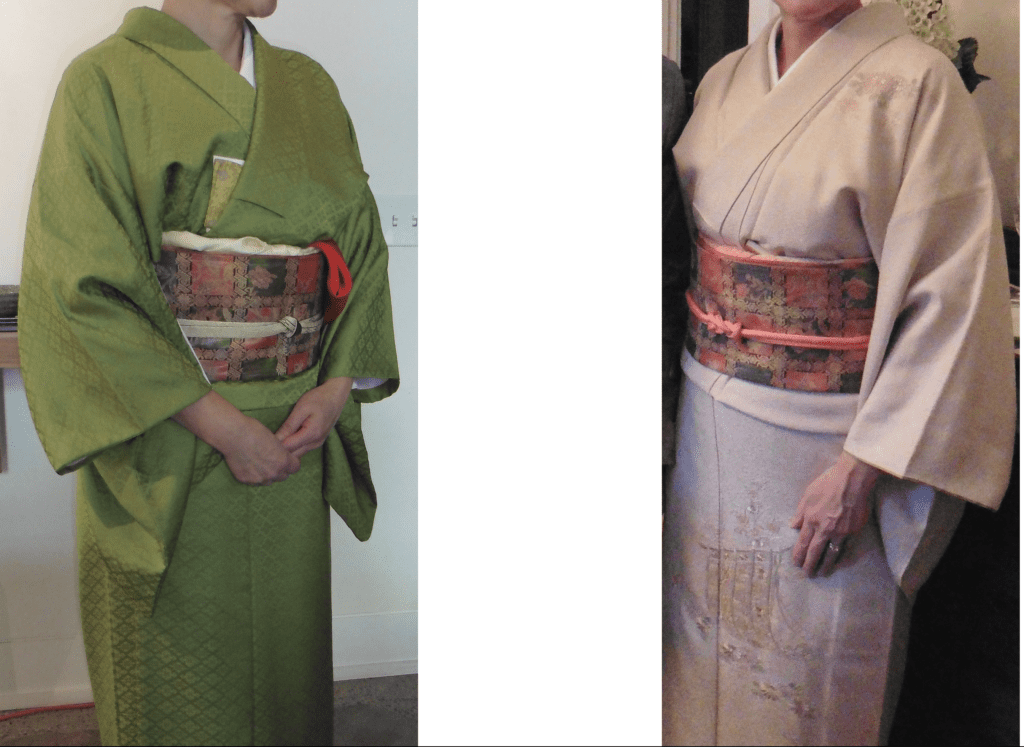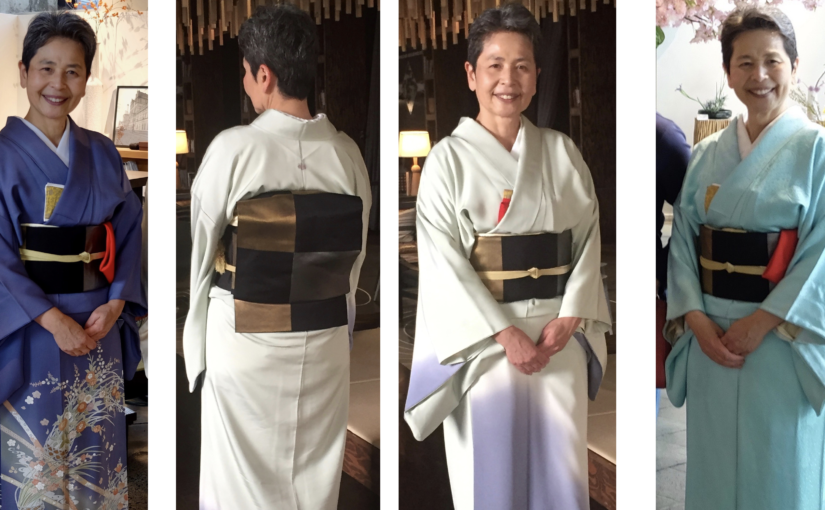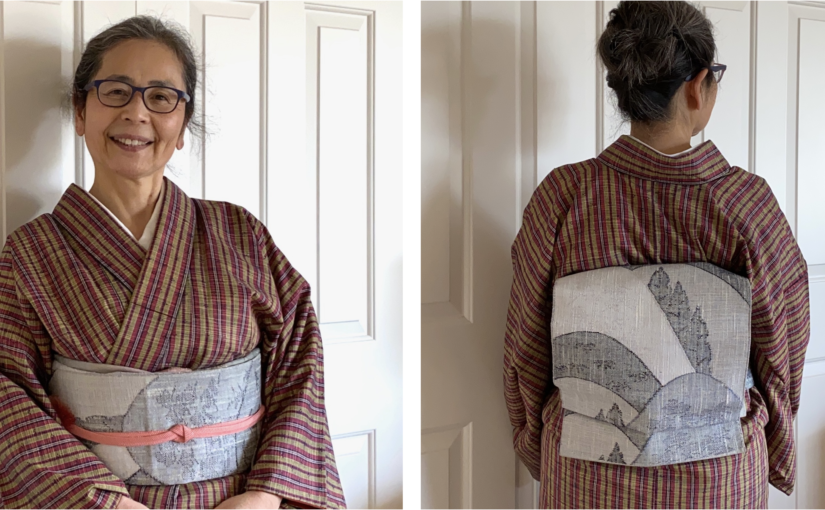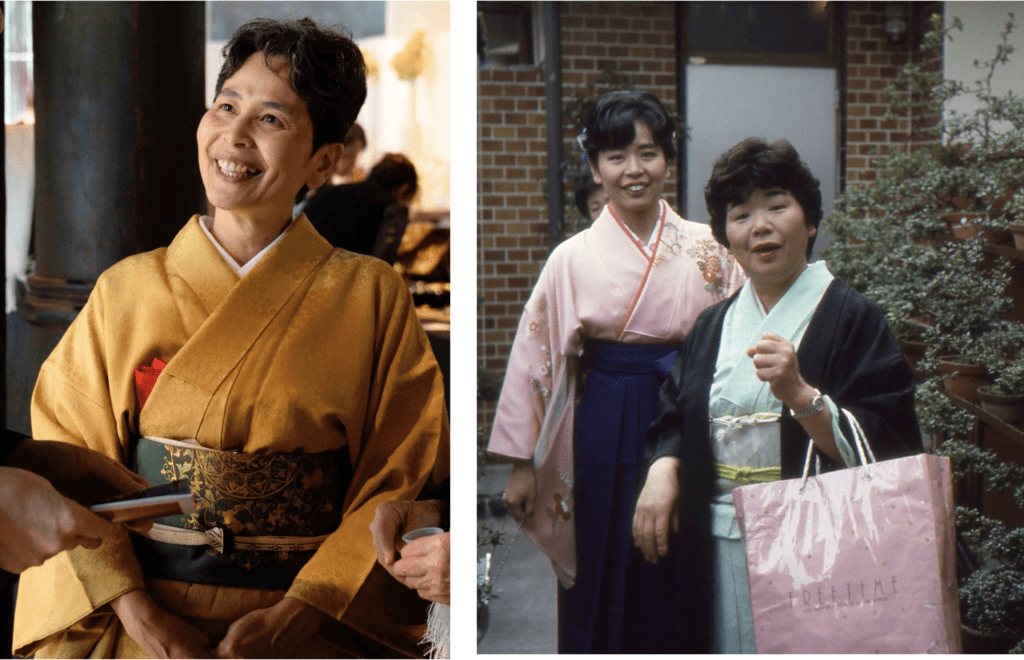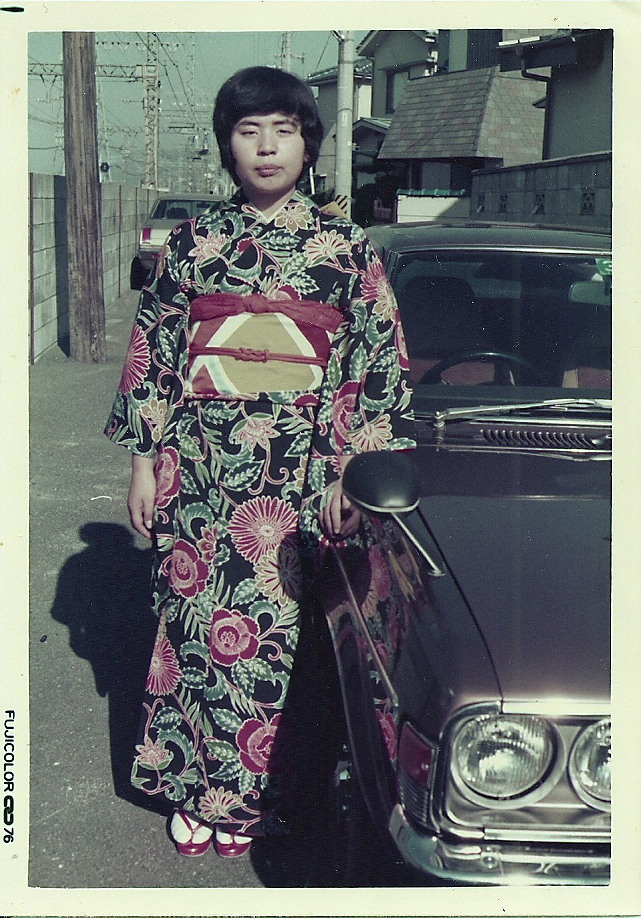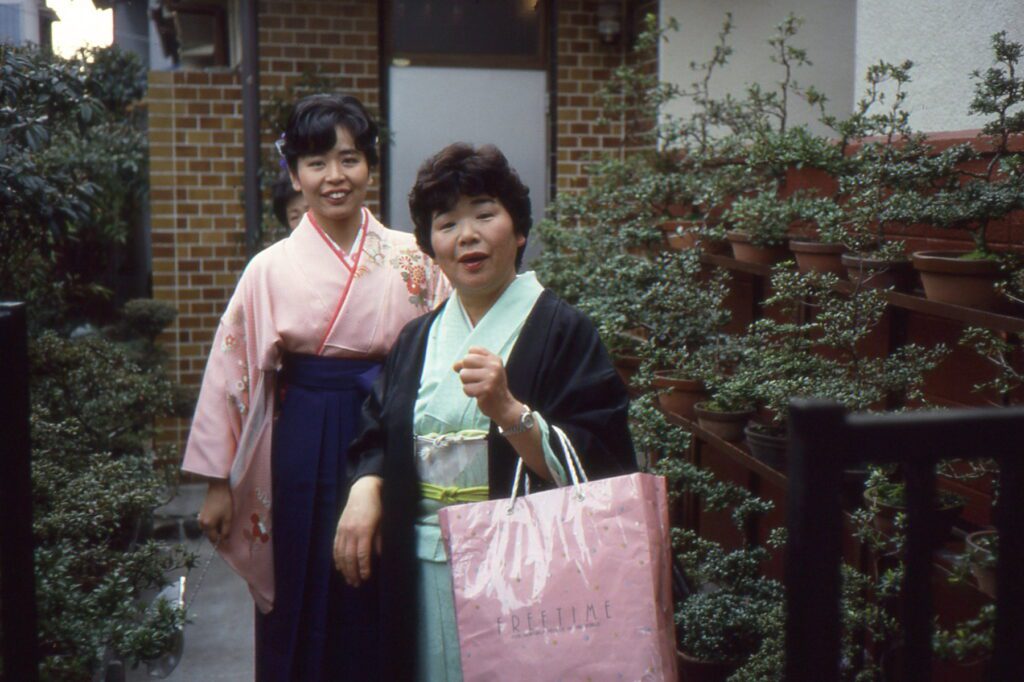Enjoy various combinations of Kimono and Obi!
What differentiates Kimono most from any other clothing is its rather standard shape.
An open front, a long, narrow collar, a straight body, and long sleeves. The length of the sleeves might vary, but even the shortest ones are still considerably longer, or I should say wider, than any Western clothing.
With such a standard shape lacking varieties, you may think Kimono coordination is quite boring. Far from it!
Kimono is always accompanied by a sash called Obi, a long cloth. After you wear Kimono, you wrap Obi around your waist, normally twice. Obi is long enough so that you can tie both ends and create different patterns. The square shape you see on my back is called Otaiko, the most popular pattern to tie Obi.
Even in the same shape, Kimono comes in so many different colors and designs. So does Obi. By mixing and matching Kimono and Obi, you can enjoy a variety of combinations. The same Kimono looks different by pairing different Obi. Likewise, the same Obi has a renewed look when matched with different Kimono.
You can purely play with the colors of Kimono and Obi. You want to give a strong impression? Use high color contrast. Or do you want to create a softer impression? Choose similar colors. If you use high-contrast colors, you may want to choose a transitioning color for Obiage, the soft-fabric cloth you tie to show only slightly between Kimono and Obi.
You may want to choose the design of Kimono and Obi to match the season. Wearing in the spring? Match the cherry blossom design on Kimono and a butterfuly on Obi. In the fall? Match the yellow color Kimono to reflect the color of turning leaves, and Obi with the chestnut design.
If you want to impress people with your sophistication, why not combining Kimono with the plum flower and Obi that has a nightingale on its design. Plum flowers and a nightingale, such a popular theme of classic Waka poetry.
Here are some examples of Kimono and Obi pairings. Enjoy!
The same kimono, different obis
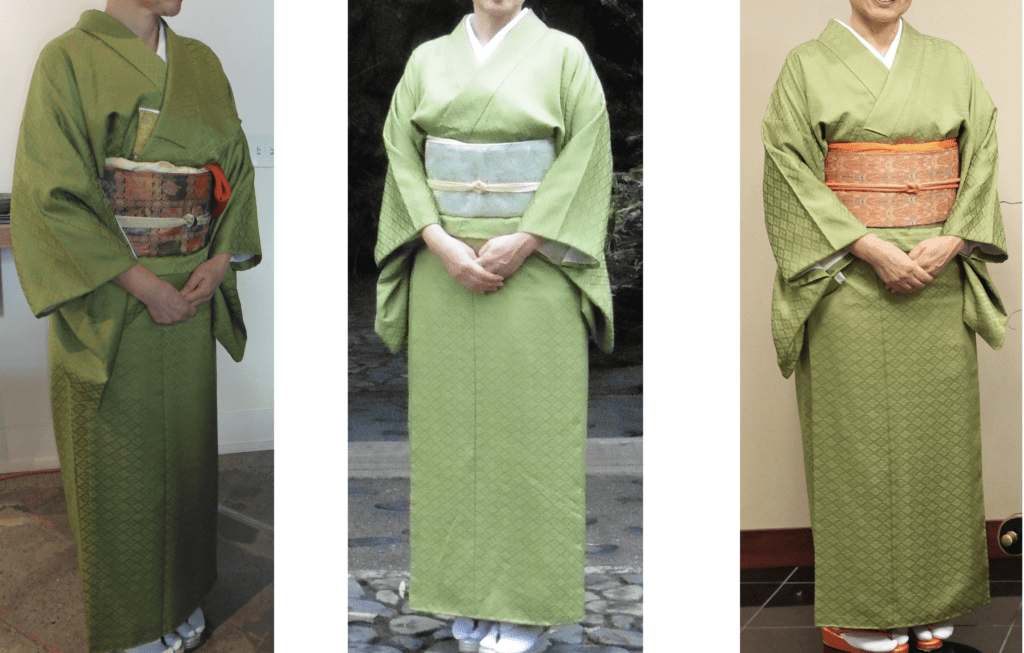

The same obi, different kimonos
